

Mehmet Saygın
-
Posts
44 -
Joined
-
Last visited
-
Days Won
1
Content Type
Profiles
Forums
Events
Posts posted by Mehmet Saygın
-
-


 3 minutes ago, koti said:
3 minutes ago, koti said:Your ignorance is truly astonishing. I think I'm done here, I'll let somebody else deal with you.
0 -
1 minute ago, koti said:
There is no such thing as pure yellow or pure green or pure any color unless you use a reference point (a color model) There is no way of comparing any color without working from within a color model. This has been explained to you in this thread multiple times ad nauseam. As for the rest of your post, I really suggest you step down from that rude and ignorant tone. This forum is for learning, if you refuse to do so and stick to personal attacks instead you wont get very far here.
I will comment as much as I please as far as it is in compliance with the forum rules here. I’ve spent half of my life teaching color management working for a major market player and I’ve had worse students than you. Change your attitude and stick arround, who knows maybe you’ll learn something.
You are not doing anything other than annoying. I'm tired of writing the same comment as a parrot, please do not write again
1 minute ago, Mehmet Saygın said:I’ve spent half of my life teaching color management working for a major market player
I am still write of these type of codes, so do not try to teach working principle of this kind of programs
-1 -
3 hours ago, koti said:
In RGB the closest shade of yellow to white is:
R-255
G-255
B-254
In CMYK the closest yellow to white is:
C-0
M-0
Y-1
K-0
In Lab the closest yellow to white is:
L-100
a-0
b-0You still do not understand me. I want to comparison red,green,blue,yellow,cyan and magenta in RGB,CMYK or Lab which are not lighter or darker shades as you describe. When you started to quote this topic,din't you look my attached picture ? You can look the values in RGB,CMYK or Lab values of my added picture with the aid of Paint program.
You don't have an enough information to prove my question because I am expert if compared to your knowledge about this topic. I am sure that I am better than you about color managemant, because I am a software engineer for 30 years and color lab space is my profession, I am glad you do not try to teach me. On the other hand, I don't want to compare yellows to white, l want to compare pure yellow, pure red, pure blue, pure green,pure cyan,pure magenta within themselves according to white,without the most lightest or darkest shade of these colors.
It's really annoying that you still do not understand, I am happier if you do not quote anymore.
0 -
42 minutes ago, koti said:
As we already established and I hope you came to agreeing, Color is a sensation which happens entirely in our brain so the answer to this question will vary from person to person. An experienced offset machinist will be able to distinguish variation in colors which you can't, he/she will be able to tell a difference between two colors which look exactly the same to you or me.
As for color models, they do not have a "similar backstage" in a sense that colors vary and they do vary a lot depending on the color model and technology used. If you still have second thoughts, print a yellow color of your choosing on your printer and compare with that "same" color on your monitor - sRGB will never look the same as CMYK. It's not only the color models that differ...two TV's at a store showing the same signal will display different colors and its very much visible in spite of both TV's using the same color model - sRGB. Two different printers (both using CMYK color model) will give you very different output when you compare printouts.
Your question only makes sense if you set it into context, that context is using a certain color model. And when you do that, other issues start to arise.
Has anyone defined "lightest" and "colour" in this thread yet?
You will still change the main topic,this informations don't give any idea about what I asked.
27 minutes ago, Mehmet Saygın said:Has anyone defined "lightest" and "colour" in this thread yet?
You will still change the main topic,this informations doesn't give any idea about what I asked.
I said you can look all color models whatever you want,the lightness value of yellow higher than any other colors (pure hues i.e red green blue violet cyan) except white which makes it the second lightest color and nearest to white.
27 minutes ago, Mehmet Saygın said:Has anyone defined "lightest" and "colour" in this thread yet?
You will still change the main topic,this informations don't give any idea about what I asked.
I said you can look all color models whatever you want,the lightness value of yellow higher than any other colors (pure hues i.e red green blue violet cyan) except white which makes it the second lightest color and nearest to white.
Absolutely,there is a little difference between two different printers,but the idea is the same,yellow is the lightest and blue (or violet) is the darkest hue except white and black
42 minutes ago, koti said:Okay, let me see if I understand you correctly - Are you looking for the closest color to white which isn't white?
You did understood what I asked,but you still give a different kind of answer which are only philosophical. I want to learn answer of above question. We can evaluate each printer,each monitor,each television,each color model or what if in itself. There is no need to comparison them, but the important point is this. I want to learn according to these examples the second lightest color and closest color to white. The answer is yellow. WHY ?
49 minutes ago, koti said:As we already established and I hope you came to agreeing, Color is a sensation which happens entirely in our brain so the answer to this question will vary from person to person. An experienced offset machinist will be able to distinguish variation in colors which you can't, he/she will be able to tell a difference between two colors which look exactly the same to you or me.
As for color models, they do not have a "similar backstage" in a sense that colors vary and they do vary a lot depending on the color model and technology used. If you still have second thoughts, print a yellow color of your choosing on your printer and compare with that "same" color on your monitor - sRGB will never look the same as CMYK. It's not only the color models that differ...two TV's at a store showing the same signal will display different colors and its very much visible in spite of both TV's using the same color model - sRGB. Two different printers (both using CMYK color model) will give you very different output when you compare printouts.
Your question only makes sense if you set it into context, that context is using a certain color model. And when you do that, other issues start to arise.
If you going quote like this kind of philosophical answer, please don't quote. I need a "real" scientific approximation which you can not do.
1 -
30 minutes ago, koti said:
The relationship between "lightest" and "color" does not exist without working with a specific color model. This relationship will differ between various color models because color models are not interchangeable.
You can base on all color models whatever you want,all of them have a similar backstage.
Okay, let me see if I understand you correctly - Are you looking for the closest color to white which isn't white?
yes.
1 -
44 minutes ago, John Cuthber said:
Has anyone defined "lightest" and "colour" in this thread yet?
Thank you, I asked "lightest" and "color" relationship but the topic became a "color perception" concept. Finally someone understand what I mean
 1
1 -
7 minutes ago, koti said:
L (Lightness) being a set of values in the LaB color model I presume you are refering to CIE LaB? Which value of yellow are you refering to? I’m sure you can imagine a very dark shade of yellow which will be closer to black than to white...in some color model.
When I have asked this question,I have describe like this so this question is meaningless. "If we think about all possible color hues and these colors are saturated ( pure hues without lighter or darker shades )"
You can also look the other color models https://en.m.wikipedia.org/wiki/Color_model all of them will justify me, I am sure
 1
1 -
4 minutes ago, koti said:
Colors are managed by using models and depending on which model you use the results will vary so a statement that "Yellow is the second lightest color" doesn't make any sense unless you put it into some context.
You can examine the color model whatever you want, yellow has the highest L* (lightness) value except white. It means that yellow is the second lightest color and nearest color to white in "lightness" criteria. I have searced this topic when posted this question. The color models verify my idea. You can make a research lightness value for color hues, you will also see that. So "Yellow is the second lightest color" makes a lot of things
 1
1 -
2 minutes ago, koti said:
This slide is just showing that a perfect set of inks in a printer (they do not exist) would behave like the mathematical model states. The next slide/graph shows that there is a discrepancy between those hypothetical, perfect inks and the ones that we have to work with in the real world.
https://www.osapublishing.org/josaa/fulltext.cfm?uri=josaa-32-9-1661
1 -
6 minutes ago, koti said:
Which slide number? (the small pink numbering at the bottom of each slide)
At 11 this graph
3 minutes ago, koti said:Its difficult to read this graph without context, this graph represents that yellow behaves in a certain way in relation to other colors under some unspecified conditions.
What exactly is your idea?y-coordinate of graph is representing reflectance function which depends lambda(wavelength) and x-coordinate is wavelength. The area under each function gives us the total reflectance of colored sample.
1 -
9 minutes ago, koti said:
Ok, these slides explain that in order to achieve an acceptable black color you need to add a separate ink to the CMY inks/toners. When you mix CMY in their maximum saturations you get sort of a black but its in fact brownish so printer manufacturers add a K ink/toner to get better results. Later the slides explain that there is a difference between the hypothetical ideal inks (defined by color models) and the real world results and the need to compensate for this by adding corrections.
I have no idea where you got this from,it doesn't make any sense to me. Yellow doesn’t reflect anything, its a name for a sensation which we perceive.
I found also an extra graphs which supports my idea
1 -
2 minutes ago, koti said:
Ok, these slides explain that in order to achieve an acceptable black color you need to add a separate ink to the CMY inks/toners. When you mix CMY in their maximum saturations you get sort of a black but its in fact brownish so printer manufacturers add a K ink/toner to get better results. Later the slides explain that there is a difference between the hypothetical ideal inks (defined by color models) and the real world results and the need to compensate for this by adding corrections.
I have no idea where you got this, it doesn't make any sense to me.
If you examine graphs carefully, you will see that graphs include Reflectance Percentage vs. Wavelength informations. Make a zoom to graphs,it will make it easier for you
 1
1 -
-
2 minutes ago, koti said:
Don't worry about it.
I don't see where they say anything about Yellow reflecting most of visible light on page 11 & 12.
Reflectance vs. Wavelength graphs for inks
0 -
1 hour ago, koti said:
„Color is not a physical quantity which can be measured. Yet we attach it to the objects around us. Colors appear to be approximately constant to a human observer. They are an important cue in everyday life. Today, it is known that the corpus callosum plays an important role in color perception. Area V4 contains cells which seem to respond to the reflectance of an object irrespective of the wavelength composition of the light reflected by the object. What is not known is how the brain arrives at a color constant or approximately color constant descriptor. A number of theories about color perception have been put forward...”
https://link.springer.com/chapter/10.1007/978-3-540-75555-5_9
And heres a half decent introduction to color management:
http://cmc.printing.org/wp-content/uploads/2018/01/Hutcheson-FundamentalsOfColorMgt.pdf
Despite my awful attitude,thank you for your interest in this topic

According to this reference at page 11 and 12 http://cmc.printing.org/wp-content/uploads/2018/01/Hutcheson-FundamentalsOfColorMgt.pdf
Yellow reflects the most amount of visible light, Is this the reason why yellow is the second lightest color and nearest color to white ?
0 -
-
I have asked this question, but the topic was pulled to a different side which is human color perception. Because of this reason, I did not get a satisfactory answer. I want to ask again the same question more clearly ,taking refuge in your understanding. Thanks in advance.

If we think about all possible color hues according to "Lab Color Space" (lightness values)L* and these colors are saturated ( pure hues without lighter shades ), yellow is the second lightest color next to white and it is also the closest color to white. ( I mean here the lightness, not brightness. If we are talking about the brightness, lime green is perceived by human eye as a brighter color than white, because our cones are most sensitive at the 550 nm wavelength.) How can this situation be explained physically ?
0 -
9 hours ago, Bender said:
It is more than different sensitivity. The peak wavelength can vary, which is why some humans have tetrachromacy. This can only be possible if the variation is significant.
(+1 for the appology and the change in attitude)
I also said this,but color blindness or tetrachromacy are abnormality situation.

If you don't have a color blindness or tetrachromacy, we all have the same color perception. A normal trichromat human have S,M and L cones which detects short,medium and long wavelengths respectively.
0 -
22 minutes ago, koti said:
No worries, forget about it.
Thanks for this noble behaviour.
On 09.04.2018 at 10:12 AM, koti said:In order to determine anything about color you need a reference point. These reference points are color models. So a certain color will have more lightness than another color only if you operate within a color model framework. If you do not use a color model it is impossible to determine anything about color besides subjective statements based onhuman perception which is different for everyone. So your statement that "yellow is the second lightest color” (what does that even mean) doesnt make sense without operating within some color model. Your question how to explain that physically is null as a result. You need to be more specific, try rephrasing what your question is.
I underdstand you right now, If we look the results which based on color model analysis (i.e. CIELAB), yellow is the second lightest color next to white according to L* values. (I mean here the lightness, when I describe the yellow which is the closest color to white.)
28 minutes ago, Mehmet Saygın said:I underdstand you right now, If we look the results which based on color model analysis (i.e. CIELAB), yellow is the second lightest color next to white according to L* values. (I mean here the lightness, when I describe the yellow which is the closest color to white.)
Can you explain, why is that ?
0 -
21 minutes ago, koti said:
All the light data gathered by your sight aparatus is transported by your neural pathways to your brain. It is when the data is parsed by the brain when color occurs. So color will depend on a countless number of factors specific to a certain brain (previous experiences) You can do a cool experiment with your friend if you can get your hands on a color printer - Print a few pages with red (or any other color) color swatches which have values close to each other and compare them with a chosen red color. Do this seperately with your friend and compare results. I’ve done this excersize many times in my trainings and the results are always the same - everybody chooses different colors to match the target. Everybody sees colors differently. Literally.
I am sorry for yesterday, I behave like an asshole.
Is this more about to be aware of same hues but a little bit different darkness or lightness ?
I mean,in fact,women are better than men categorizing the same color's variations,but we see the same color's.
20 minutes ago, StringJunky said:Different sensitivities in each cone type between individuals could render different hues.
I think the differences that will cause are very small and negligible according to the working mechanism of photoreceptors.
1 -
On 09.04.2018 at 11:34 AM, Mehmet Saygın said:
human perception which is different for everyone
Can someone do explain me how we perceive the colors differently,if we have the same kind of photoreceptors ? (S,M,L cones)
0 -
1 minute ago, koti said:
So much for a civil discussion. Good luck with explaining your false premises to others.
It is wrong for you, but truths for science.
-2 -
1 hour ago, koti said:
Again, this time its in the title itself of what you linked:
”Is the sky really blue? Some hunter-gatherers don’t describe colors the same way most people do”
I’m glad you took a deep breath, it will be easier for you to understand that your statement:
is wrong.
Color perception has to include the brain. The physics processes involved are the same for everybody but color perception happens in the brain.
Are you mentally disabled ? or you do not have the intelligence to interpret what you read ? If so, this debate has already been unfulfilled, I guess I have to learn sign language for communicating with you
 There are some people who have the capacity to understand me, maybe I explain for them.
There are some people who have the capacity to understand me, maybe I explain for them.
The latest article said that they are also see the colors as we can but they have not any special description for it.(i.e. blue hues very little in the nature,so they do not face to face this color, because of this reason they have not any special name for this color.)
I were also tried to explain we see the colors same, but interpret differently, (as we do everything) but you need to do more than tearing the peel from banana for understanding.
 -5
-5 -
28 minutes ago, koti said:
No. Actually that popscience article states exactly the opposite of your claims that we all perceive the same colors. Try again.
I think you have a problem understanding your reading. I would take a deep breath and recommend reading it again calmly. I do you a favor and add another link
At the beginning of this debate, I said we see the color same, but feels or interprets differently because of own experiences. This two links also tell the parallel things what I said. When everyone look at an apple, we see a color signal between 620-730 nm reflected light wavelengths. Maybe this colored light feels different person by person,but it is the scientific fact that everyone see the same reflection range.
-1

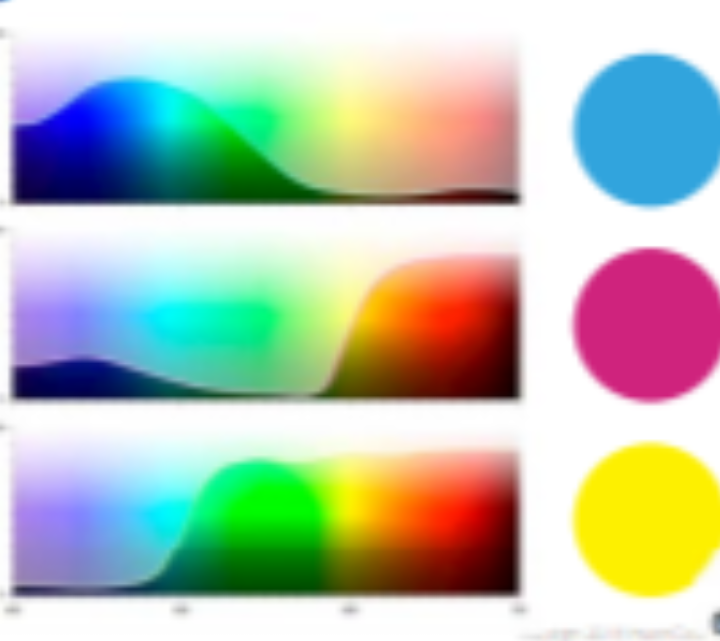
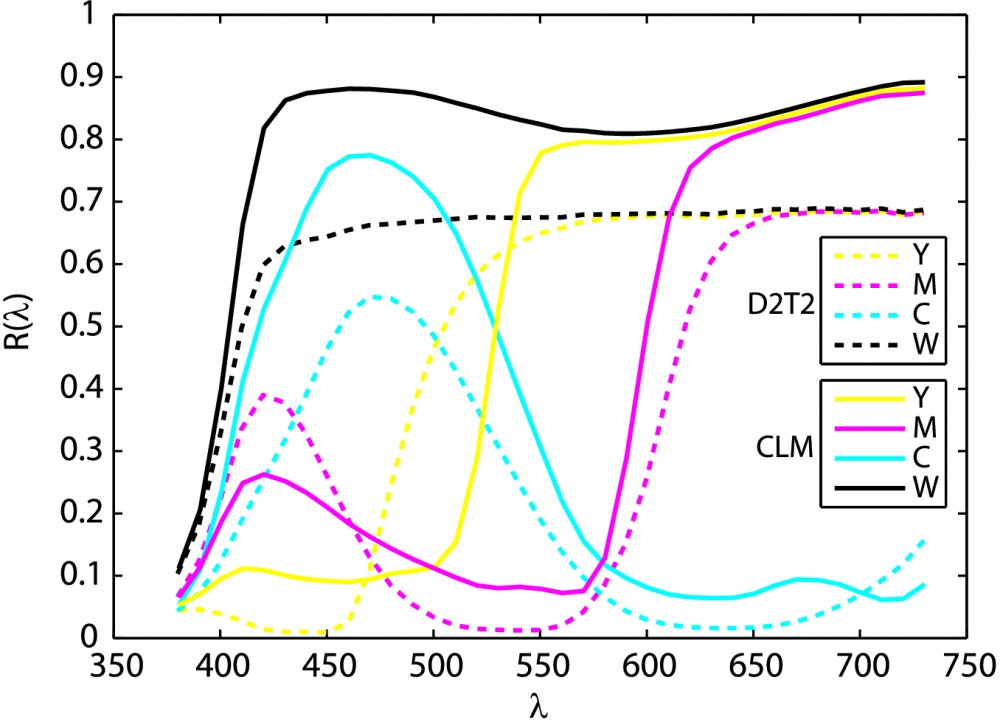
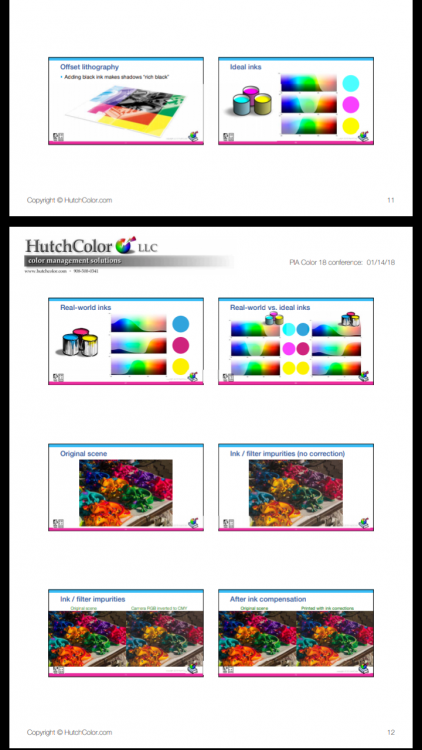
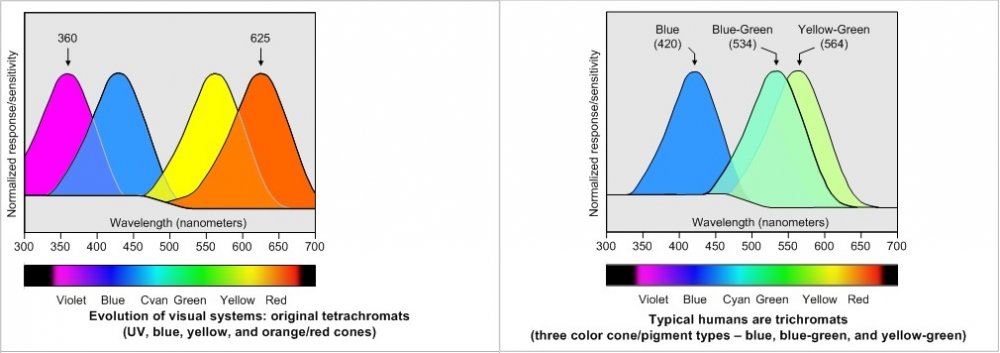
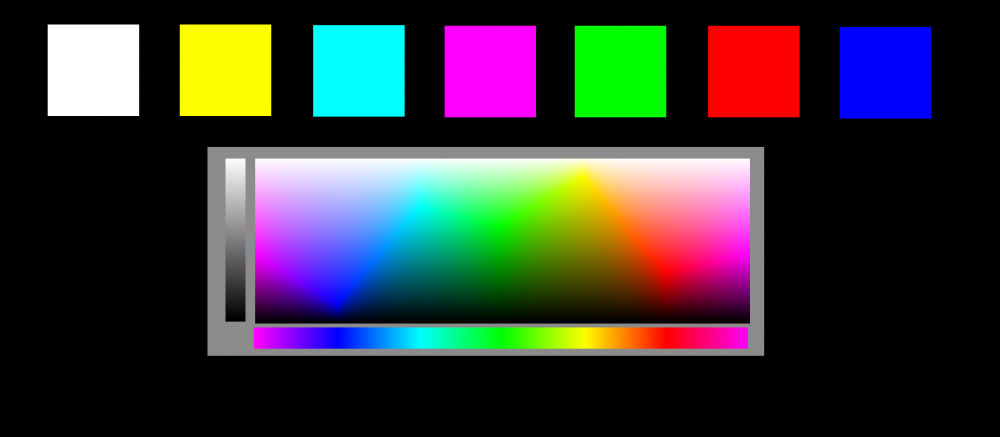
The Second Lightest Color
in Classical Physics
Posted
Delete my account immediately